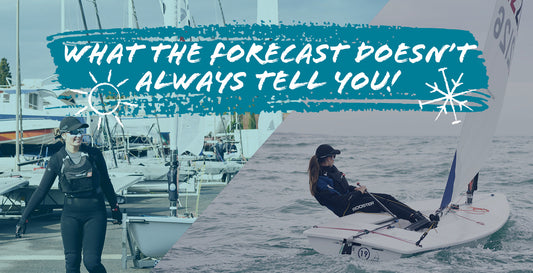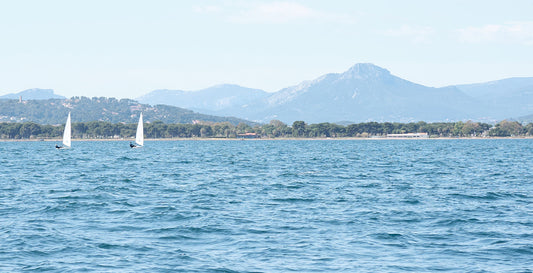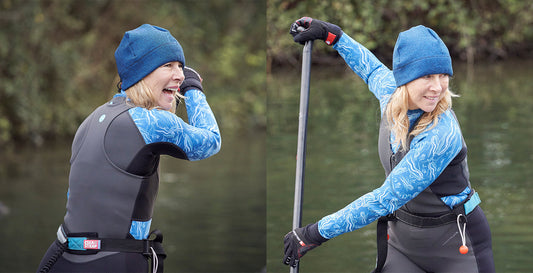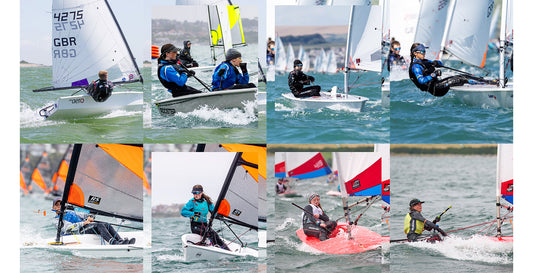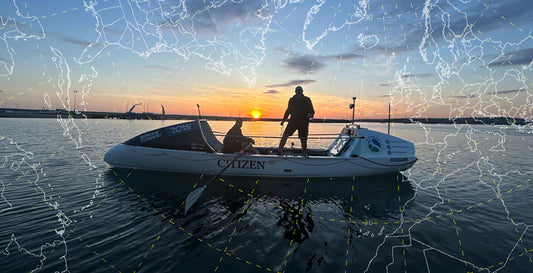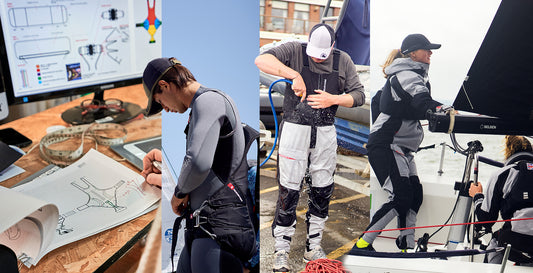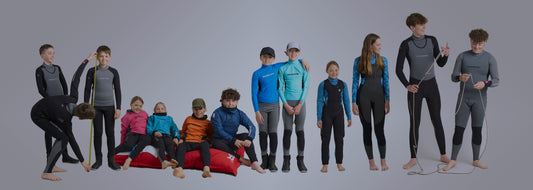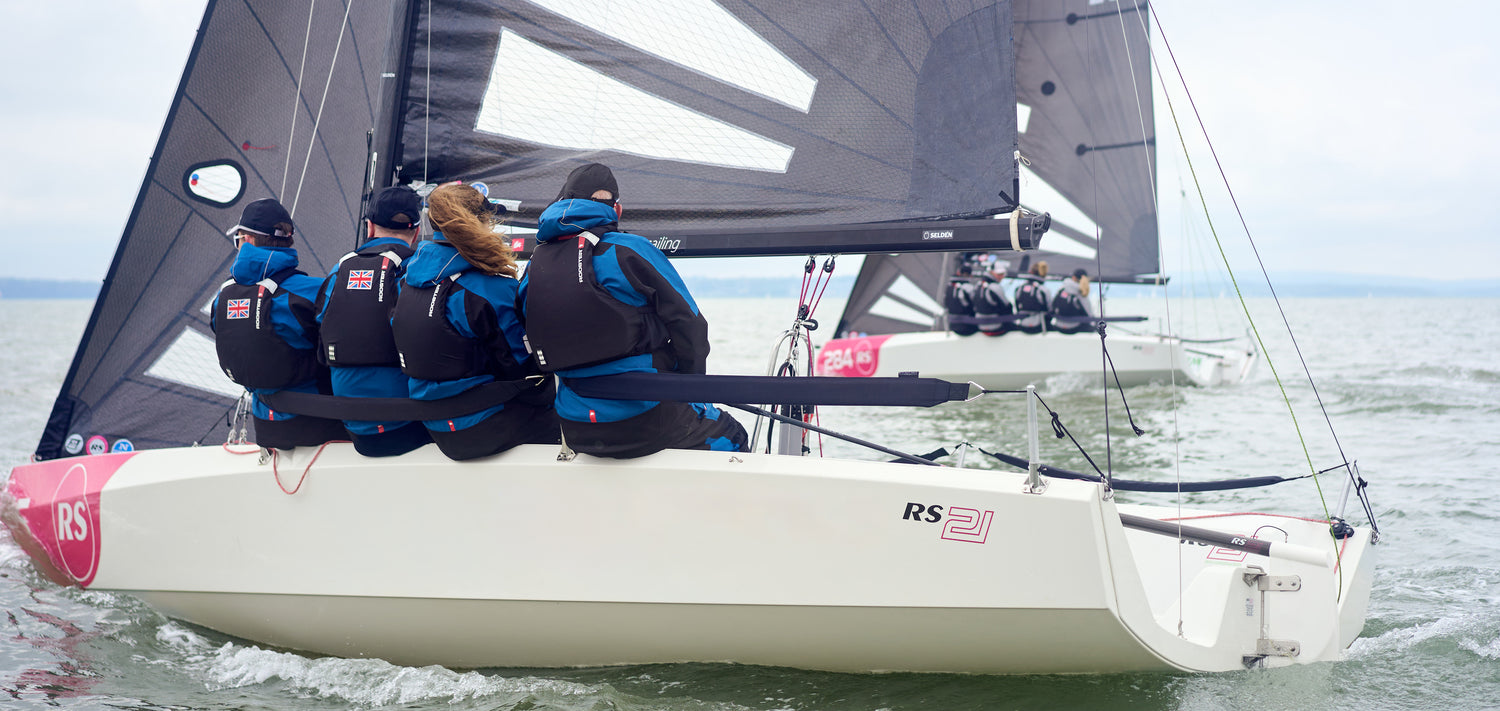
Campaigning Blogs
Why It Feels Colder on the Water – What the forecast doesn't always tell you!
Whether you’re heading out for a training session, coaching from a RIB, or a full day of racing, you’ve probably noticed this universal truth:
It ALWAYS feels colder on the water, But WHY?
And how should you dress to stay warm, dry, and focused out there?
At Rooster, we believe that understanding the science behind air temperature on land vs. sea can help you make smarter kit choices - and in turn have a much better time on the water.
The Science: Air Temperature on Land vs. Sea
The main reason it feels colder at sea than on land is down to three key factors: water’s thermal properties, wind chill, and humidity.
1. Water Holds Cold Better Than Land
Water has a much higher specific heat capacity than land, meaning it takes longer to heat up—and cool down. So even on a warm spring or autumn day, the sea may still be holding onto winter temperatures. That colder surface cools the air directly above it.
✅ Example: According to the UK Met Office, in spring, sea surface temperatures around the UK are often 5–8°C colder than the average daytime air temperature on land.
✅ More science? The National Data Buoy Center (NDBC) explains that during winter, the ocean tends to warm the air above it more effectively than cold land surfaces, leading to noticeable differences in temperature.
2. Wind Chill is Stronger Over Water
Open water spaces offer less shelter, so wind speeds are typically higher. This increases convective heat loss, making it feel much colder than the thermometer says—especially if you're wet or moving fast.
💨 Fact: A 10°C air temperature with a 20-knot breeze can feel like 3–4°C once wind chill is accounted for. (Source: National Weather Service Wind Chill Calculator)
🌧️ And when you add water into the mix—whether from spray, rain, or full immersion—the cooling effect intensifies. This is known as wet wind chill, and it can dramatically drop your perceived temperature. Check out this live Wet Wind Chill Chart from Southampton Weather to see just how cold it can feel.
3. Humidity and Evaporation Cool You Down
When you’re surrounded by water, evaporation plays a major role in how cold you feel. Wet kit (or spray from waves and wind) speeds up heat loss from your body through evaporation—especially in technical fabrics.
🌊 Even on sunny days, this combo of wind + water = cold.
What This Means for Your Kit Bag
The difference in perceived temperature between land and sea can be 5–10°C or more. That’s a big deal if you’re dressing based on the weather you felt in the car park!
At Rooster, we always recommend preparing for the real conditions you’ll experience on the water—not just what your phone’s weather app says.
Here’s how to layer like a pro:
1. Base Layer
Start with moisture-wicking thermal layers. Our PolyPro™ Leggings and PolyPro™ Top regulate body temperature and stay warm even when damp.
2. Insulating Mid-Layer
In colder months or early mornings, add an insulating layer like our 4mm Supertherm Neoprene (for temperatures under 12°C) or 1.5mm Thermaflex Neoprene (for when its a bit warmer) for extra warmth without bulk.
3. Waterproof / Windproof Outer Layer
Seal it all in with a windproof, waterproof shell. Our Aquafleece® Spray Top range is a great top-layer addition for dinghy sailing, offering insulation without the bulk. For sportsboat and keelboat sailors or coaches needing protection without sacrificing movement, the SB1 Inshore Jacket or Coastal Hi-Fits are ideal.
Final Thought: Be One Step Ahead
It’s easy to underestimate how cold it’ll feel on the water—especially when the sun is shining. But staying warm means staying sharp, enjoying your session, and avoiding early exits due to the chill.
So next time you’re packing kit for a day afloat, remember: it’s not just about air temperature—it’s about where you are. Layer smart, and you’ll be ready for anything.
Explore our full layering range and gear up for comfort, confidence, and performance—whatever the forecast says.
📚 Learn more about temperature science from NOAA’s National Data Buoy Center and their detailed explanation of air-water temperature differences.
The Good, the Bad, and the Polluted: A Look at Water Quality for Sailors and Watersports.
With the weather heating up many across Europe will be looking to get out on the water, but no one wants to swim in polluted water, right?
With that thought in mind, the team at Rooster thought it would be worth taking a look at the different countries in Europe and their respective water quality ratings to find out which, on average, provides the cleanest waterways no matter what sport you are engaging in. The assumption is that countries with good water quality and low microplastic pollution would be more suitable for swimming and other watersports. However, our findings prompted us to ask more questions rather than offering clear answers.
The map shows the water quality in each European country combined with the microplastic pollution level in tonnes. As you hover over the map, you can check the water quality for each country. The gradient in colour reflects how high or low the water quality is.
What did we find?
The majority of the countries had a high proportion of good water quality, with 4 countries having a proportion of good water quality under 50, 9 countries between 50-70, and 30 countries over 70.
However, there was a poor correlation between high quality and low microplastic pollution. In fact, many countries with a very high proportion of good water quality also had significant levels of microplastic pollution. For example, while Germany had an impressive 90.3% of bathing sites with good water quality, it also had a notable amount of microplastic pollution at 74,000 tonnes.
Moreover, upon analysing the data, we found that Western Europe had the highest average microplastic pollution, while Northern Europe had the least microplastic pollution in waterways. Once again however, both regions had an average of 80% good water quality.
There are a few potential reasons to explain the weak connection between water quality and microplastic pollution:
● The water quality data is taken from bathing sites, which are usually known to be used by people for watersports and other recreational activities. However, the data for microplastic pollution is taken from waterways, which encompasses more than bathing sites and can be used for a variety of purposes, such as vehicular passage and transporting goods.
● Such waterways may be more prone to microplastic pollution as they include a broader set of waterways used for a range of purposes. This may explain the notable levels of microplastic pollution for many of the countries.
● Another reason may be that the majority of water quality assessments do not test for microplastic pollution, usually only testing for bacteria harmful to humans. However, should water quality assessments start considering microplastic pollution?
Are Water Quality Assessment Missing a Major Factor?
After further research, we found that the majority of water quality assessments don’t factor in microplastic pollution, with only certain bacteria such as Escherichia coli and intestinal enterococci taken into account.
This may be because research into the impact of microplastic pollution on humans and the environment is relatively recent. However, research has been done which proves that microplastics in water can affect not only those in the water, but also those within the area. Moreover, microplastics can be harmful to aquatic biota upon ingestion as they contain toxic chemicals and may absorb organic pollutants from the environment.
Regardless of the discrepancy between both factors, this doesn’t nullify the water quality data, considering that the microplastic pollution data is most likely taken from a wider or different set of waterways than that used for water quality assessments.
That being said, we were interested in discovering which countries had the highest proportions of good water quality, making them suitable destinations for watersports activities.
Best Performing European Countries
The Top 20 Best European Countries by water-quality
● Norway (100)
● Cyprus (97.6)
● Austria (96.9)
● Croatia (96.7)
● Greece (95.8)
● Montenegro (95)
● Bulgaria (94.8)
● Denmark (94)
● Malta (92)
● Georgia (92)
● Germany (90.3)
● Italy (90.3)
● Lithuania (89.3)
● Luxembourg (88.2)
● Spain (87.6)
● Finland (87.2)
● Portugal (86.2)
● United Kingdom (86)
● Liechtenstein (80)
● Czech Republic (79.1)
● Slovenia (78.7)
It’s good to see that the UK is included in the top 20 countries suitable for watersports activities, with 86% of its bathing sites meeting good water quality standards.
A few countries showed strong correlations between high proportions of good water quality and low levels of microplastic pollution.
Montenegro had the lowest amount of microplastic pollution with 95% of its bathing sites having good water quality. Cyprus also had a significantly lower amount of microplastic pollution compared to other countries, with 97.6% of its bathing sites boasting good water quality.
Three countries which may not be ideal for watersports activities are interestingly located within the same region in the Balkans, including Siberia, Albania, and Herzengovia. These countries hold the lowest portions of good water quality ranging from 30-50%.
Final Thoughts
The water quality and microplastics data showed us unexpected results, with high microplastic pollution levels even for countries with a proportion of good water quality of over 70%. This could be for several reasons, including a potentially wider or different set of waterways included in microplastic pollution assessments, and the absence of micro plastic inclusion in water assessments.
Due to these factors however, the data for good water quality can still be used to broadly reflect countries suitable for watersports activities. We hope this encourages watersports enthusiasts, athletes, and swimmers to discover the water sites within the United Kingdom and other countries that made the list.
Our Efforts for Sustainable Watersports
That said, the Rooster team recognises the importance of making watersports sustainable, especially for those who partake regularly. Whether you’re a beginner or a professional athlete, you may own or have old wetsuits and other watersports apparel lying unused.
As an initiative to reduce these items going to landfills, we’ve partnered with Mindful Manta, a UK-based company that turns wetsuits into sustainable accessories such as bags and small purses.
If you’d like to help reduce waste from unused wetsuits, you can drop off old or unused wetsuits at our Fareham office, after which we will send them to Mindful Manta to turn them into reusable and useful items.
I didn't know what was *SUP*
Written by Lynne Hawthorne @lynne_sup_fitness
A little bit about me:
I found myself in a rough place a few years ago, my kids were getting older and no longer depended on me as much as they had when younger. I suddenly had all this time again that I’d not planned. I also felt I didn’t know what my purpose was and felt I’d lost my identity and myself.
Nothing had changed in my husbands life, he was still doing what he’s always done but I felt – is this it, what now?
Menopause:
My moods were all over the place, I was bursting out crying while walking the dogs for no reason then felt bad about why I was crying. I have a stable homelife, family and secure job so I felt guilty as to why I was sad and felt I had no right to be sad as others had it worse and then I'd cry again.
Each day was like an act, I'd go to work, smile and portray this happy person, but inside I was screaming and everything was a fog I felt I was battling with daily. With all the extra time I had I did things around the home, garden, but that wasn’t enough – I felt that I was missing the point, but I didn’t know what. I'd always been into water sports and my sports and hobbies had taken a bit of a back seat while the kids were young. I had a paddleboard in the garage that we used on family holidays, so I started to take it out alone.
I loved it, loved the freedom it gave me and would often listen to audiobooks and podcasts staying out sometimes for a whole day.
Not being social media savvy at the time, I didn’t know there were Paddleboarding clubs and although I’d pass lots of people out paddling and paddled in the place where my current club trained, I didn’t think to ask if this was a club. It wasn’t until I mentioned to a friend that I was lonely and often sad and spent so much time alone she suggested I join a SUP Club, giving me names I could search on Facebook. I had no idea that there were clubs over FB and that was the start of a change of lifestyle for me. I registered for my local club, went along and was surprised that I'd spotted a few of the faces out. Had I been a beginner I feel it would have been easier for me to find a club as that’s the natural progression from lessons to club paddling, but as I'd been paddling years before the sport was popular I had no idea the clubs existed.
Through Paddling it gave me something to plan, a weekly meet-up, a purpose, something for me.
Meeting friends and getting out, stopping at cafes for lunch or a coffee, having a picnic on the board etc…. all took on a whole new meaning and with that my mood lifted. My family noticed that I was happier and more content, I was more productive at work – to me paddleboarding changed everything.
I then got into racing and regardless how far you take paddling it’s a place where you can meet others or simply solo paddle to get away from it all.
For me its my little piece of solace and time away from home/ work out in the nature.
– Through paddling I’ve found not only myself but made alot of friends along the way.
For me it was my saviour when I didn’t know what was SUP!
As for menopause…. What’s that? 😊
Powering the Next Generation of Sailors
At Rooster, junior sailing isn’t just part of what we do – it’s at the core of who we are. Through strategic partnerships, ambassador programs, and dedicated support initiatives, we’re dedicated to inspiring, educating, and equipping young sailors for success on the water.
Here are a few ways we promote and encourage Junior sailing and participation:
CLASSES WE WORK WITH AND SUPPORT
ITCA GBR
We are proud to have supported ITCA GBR for over 20 years. This longstanding collaboration highlights our deep commitment to developing young sailing talent in the UK.
RS Tera & RS FevaFrom grassroots to grand prix, we’ve supported the RS Tera and RS Feva circuits for over 6 years, ensuring young sailors have the best racing experience possible, whilst celebrating the fun that define RS sailing classes.
ILCA UK
An important class for us, and where we started from with our Polilite Mainsheets and Classic Hikers. In recent years, we've re-partnered with ILCA UK to support this great class, which serves as a key stepping stone into the Olympic pathway and offers top-tier racing.
US Optimist National TeamA relatively new partnership for us, 2024 saw us team up with the US Optimist National Team, aligning with our shared values of excellence and youth participation in sailing in the USA.
Key Junior Events for the 2025 season that we are supporting are:
ITCA UK National Series
ITCA World Championships
RS Feva Nationals
RS Feva GP series
Poole Youth Week
ILCA U21 Worlds
RS Tera Regional Championships
ROOSTER RIDERS & AMBASSADORS
Our Rider & Ambassador Schemes supports passionate sailors who embody our values - dedication, humility, and inspiration.
Rooster Riders push performance across multiple classes, representing Rooster with skill and sportsmanship.
Rooster Ambassadors are standout sailors who inspire the next generation through their achievements and attitude.
Both receive support, top-tier gear, and a strong community to help them thrive on and off the water.
Junior Ambassadors: Leading the way for 2025
Our junior ambassadors live and breathe the Rooster spirit—driven, humble, and inspiring.
From Topper success to ILCA 4, Harry’s dedication and infectious enthusiasm make him one to watch on the Olympic pathway.
A multi-title champion and YJA Yachtsman of the Year, Jess is as impressive off the water as she is on it. We’ve been with her for five years and can’t wait to see what’s next!
Rooster 2025 Riders: The future of sailing
Our Rooster Riders are a dynamic group of talented sailors whom push the limits of performance across multiple classes. In 2025, 50% of our team are junior sailors, competing in Opti, RS Tera, RS Feva, ILCA 4, WASZP, 29er, and ITCA.
SUPPORTING JUNIORS THROUGH QUALITY GEAR
Understanding the unique needs of junior sailors, we offer specialised equipment to enhance their on-water experience. We recognise that junior sailors are at a crucial stage of their sailing journey, so we aim to provide them with the tools and support they need to feel confident, comfortable, and capable on the water, helping them to achieve their full potential.
Size Matters: Our junior range covers everything from base layers to wetsuits in Junior Small to Large, plus gloves, boots, and accessories down to 3XS. Rooster is your one-stop shop for young sailors.
LOOKING AHEAD: OUR CONTINUED COMMITMENT
For over 25 years, we’ve championed junior sailing, and we’re not stopping now. We’ll keep driving innovation, forging partnerships, and supporting young talent to ensure the future of sailing is brighter than ever.
At Rooster, we believe that by investing in youth development today, we are securing the future of sailing for generations to come.
Only 3000 miles to go: Rowing for a cause
Something we deeply value and make time for, are dedicated individuals who take on remarkable challenges for meaningful causes. For the last few years we have supported some extraordinary teams taking part in the Worlds Toughest Row across the Atlantic Ocean. 3000 miles of non stop ever changing ocean, extreme weather, marlin strikes and of course the rowing, hear from some of our past current and future teams taking on this epic challenge!
Introducing our team for this year: 2Stroke
Longtime friends Karl Austen and Ed Shaw, share a passion for adventures and sports. Inspired by watching a family member row the World’s Toughest Row in 2020, they formed team ‘2Stroke’ to take on the challenge despite being novice ocean rowers. Their journey is about family, adventure, and giving back, with the belief that anything is possible with determination and support. They have been raising awareness and funds for Dementia UK and Prostate Cancer UK - charities close to their heart that they care deeply about!
Meet the team:
We can’t wait to watch them take on this challenge! Hear from the team as the the race start draws closer:
“As the race start draws nearer we are making final preparations for food packing, equipment checks, kit and clothing and of course the ongoing physical training.
We’ve prepared very well, having spent over 200 hours on our boat Pegasus in UK coastal waters. We now have our eyes on the end goal and visualising the race and everything it will bring. All we can do now is hope that our discipline and determination will see us through. Support from our sponsors has been fabulous.
This campaign has certainly not just been the work of the 2 man crew but of a whole host of people who share our passion and vision. Rooster certainly have all of that in bucketloads.”
A tale from last year through the lens of Team Vibe the Wave
Highs:
The stars, watching weather come in, experiencing it all, making the most of the little things, the unknown...the list is endless...
We chose to “live the adventure” it was our team ethos, and we totally bought into this idea and embodied in. For example we have “Funday Friday” which entailed a treat each (extra snacks and a fizzy drink, or in my case champagne!) and a team surprise (we took it in turns to organise it). These became massive highlights.
“The World’s Most Remote Cocktail Party” was a massive high, closely followed by our last Friday at sea where we enjoyed Full Moon Friday Party (neon face paint, usb disco balls, lei necklaces, beers, cocktail buckets and 90’s tunes banging out loud).
Lows:
Being absolutely soaked by a rouge wave having just got into fresh dry clothes – every. Time.
Two words: bum sores. Enough said.
Swollen and blistered hands. We had days when we could barely grips the oars, and once you’d managed to wrap your paws around them, it was two hours of trying to ignore the agony.
The main message we have for the lows is: every single member of the crew will have at least one moment of feeling low physically, emotionally or mentally (sometimes one at a time, sometimes all at once), and rallying as a team to help each other through them really is the only way to manage them. And the reminder that they will pass (although, maybe don’t say that in the moment as it isn’t always that helpful to hear!). Embrace your challenges as opportunities and celebrate every nautical milestone, no matter how small.
Pre race message:
The crossing is a truly unique environment and more than anything, a gift. Embrace it, for everything that it is; The good, the bad, the fun, the misery, the pain, the fatigue, the hunger, the scenery, the scary moments, the hilarious moments, the mundane moments, the routine, the closeness, the team, the bucket… everything.
As you row across thousands of waves, remember the journey is not about conquering distance, it is testament to the power of team work, perseverance and unwavering dedication. The ocean may seem vast and overwhelming at times, but your spirit, and collective strength will propel you forward through every crest and trough.
Whether you’re in it to win it, or for the experience, cherish it. There is no certainty, no guarantees. You are at the mercy of the weather and the sea. But there is true beauty in the simplicity of “boat life” and it will be with you forever. So, we wish you the very best of luck with fair winds and following seas!
Looking to the future: Team Offshoare
Looking to the 2025-26 edition of the Worlds Toughest Row our team of four: Offshoare have been busy getting the practice in already. Hear what they have to say a year out from when they will line up on the start line:
"Preparing for a challenge as immense as rowing the Atlantic demands more than physical strength - it requires meticulous planning and a commitment to refining every detail. We began our training this summer and are now working our way through the gear, the boat, and various drills to find out what works best for us. We are excited to see how much we will grow and learn over the next year leading up to the start of the race, and of course, during the crossing itself. The journey will take us around 40-50 days, which will really put our kit to the test.
With Rooster’s support, we are focused on selecting gear we truly trust, knowing that we can only bring a limited number of essential items. Having reliable gear is about more than just functionality and safety - it is about peace of mind and knowing that our equipment will not fail us when we need it most. Additionally, having team gear enhances our sense of unity, keeping our spirits high as we face the challenges ahead."
The Power of Teamwork: How Our Riders and Ambassadors Help Shape our Gear Development
At Rooster, we’re all about creating the best possible gear for people who, like us, can’t get enough of life on the water. While our HQ team includes plenty of sailors, paddleboarders, wingfoilers, windsurfers, and all-around watersports enthusiasts, we know our own experience is just one piece of the puzzle. That’s why we work closely with our network of riders and ambassadors - true experts who test our products in real time, in real conditions. With their feedback, we fine-tune every piece of kit to deliver top quality performance, comfort, and fit.
Here’s how their input helps us take our gear to the next level and make our products even better for everyone on the water.
Testing: Where the Magic Happens
When it comes to watersports, the true test of any product is on the water. Our riders and ambassadors put our kit to the test in real conditions, from intense training sessions in strong winds to calm, glassy waters, giving us feedback we can’t get any other way.
“Very busy week at the RS21 worlds in Sardinia… The jacket, I love it, really nice, comfortable and practical. Struggling to find anything to feedback on with it. The downwards bungees for the hood are maybe 50mm ish too long” – Liam Willis, Rider
This kind of feedback helps us address the smallest details before products reach our customers, ensuring they’re durable, tested, and ready for anything.
Honest Feedback That Drives Real Improvement
One of the biggest benefits of working with our rider and ambassador network is that we get direct, honest feedback that helps us fine-tune every design. Whether it’s small details like seam placements or major aspects like fabric choices, our testers let us know what works, what doesn’t, and what could make each piece even better.
“I was out this morning testing the smock in 15-18kts and torrential rain! Firstly it was great I was very impressed with the salopettes and the smock which kept me very dry! The fit was good and is just a nice product. I think you should keep the pockets and make them waterproof inside as you always need pockets especially for yacht and keel boat.” – Sam Mabey, Rooster Ambassador.
Real-time feedback like this shapes our next round of adjustments, ensuring that each product meets our community’s standards in comfort, protection, and function.
Creating Gear That Fits Every Body and Style
When it comes to fit, watersports gear has to hit the mark - not only in sizing but in allowing for freedom of movement across a variety of sports. Our riders and ambassadors represent a range of body types and disciplines, making them ideal testers for this aspect of design, where we can target different riders based on what we are developing. Their insights help us refine our fits so they feel custom-made, no matter what watersport our customers enjoy.
Rider, Dylan Collingbourne, a sailor and coach, who tested our new trainers noted, “Having recently tried and tested the Rooster trainers in different environments over the course of ~9 months, I am happy to say they are the comfiest water activity trainers I have worn. The cushioning in the heel provides great support for sailing as I often get some pain in heels when doing activity and only when I wear shoes with a decent heel, I do not get this pain. So this was really appreciated.”
By gathering feedback from people with unique needs and perspectives, we ensure our gear fits comfortably and moves fluidly with the wearer, whatever their size or sport.
Fresh Perspectives Fuelling Innovation
The watersports world is always evolving, and our riders and ambassadors help us keep pace with fresh perspectives and ideas. Their firsthand experience, combined with the latest insights from the industry, often leads us to creative changes and updates we might not have considered on our own.
These contributions help us innovate with purpose, creating gear that responds to real needs rather than theoretical ones. Our community’s input keeps us on the cutting edge of comfort, performance, and style.
Building a Community-Driven Brand
What makes Rooster truly special is our connection with the watersports community. By collaborating closely with our riders and ambassadors, we’re building a brand that reflects their real experiences and perspectives. These testers become an essential part of our team, sharing in our vision and helping us refine it through their dedication and insights.
Emily Robertson, Rooster partner from WOKC summed it up perfectly: “It’s great to work with a brand that actually listens to what we need and takes it seriously.”
This shared passion strengthens our commitment to producing reliable, innovative gear. It also brings us closer to the community, reminding us why we do what we do.
With the expertise and feedback of our riders and ambassadors, we can confidently create products that stand up to the highest standards, by ensuring they’re tested, trusted, and inspired by real watersports enthusiasts.
So here’s to the team behind the scenes and the network on the water. Together, we’re making sure every piece of Rooster’s kit is something you can trust, wherever your passion for the water takes you.
Junior Sizing: How we aim to deliver the perfect fit
Sailing is a sport that requires precision, skill, and the right gear to ensure comfort and safety on the water. At Rooster, we understand that providing the perfect fit for junior sailors is crucial to their performance and enjoyment. However, junior sizing presents unique challenges because children grow at different rates and have varying proportions. This makes the one-size-fits-all approach nearly impossible. Let’s explore these challenges and how we offer solutions that adapt to young sailors' needs, helping parents find the right size.
Understanding the Diversity in Junior Sizes
Every parent knows that children come in all shapes and sizes, and this is especially true for junior sailors. We recently had a fit session and photoshoot with a group of junior sailors, and the variety in sizes was clear to see. All the kids were between 9 and 12 years old, yet it was impossible to classify them into a size just by their age. The differences in height, weight, and body proportions highlighted how unique each sailor is, making age-based sizing a real challenge. If we go by age alone, this will likely leave some children with ill-fitting gear, impacting their comfort and performance on the water.
Our Approach to Junior Sizing
We recognise these challenges and have dedicated ourselves to developing junior sailing gear that offers a better fit for a wide range of body types. Here’s how we do it:
Innovative Materials and thoughtful designs
Our gear is made from high-quality materials that provide both stretch and durability. This means that our clothing can accommodate growth spurts and proportional differences, offering a snug and comfortable fit without sacrificing performance. The stretchable fabrics allow for a greater range of motion, essential for active young sailors. Our designs are created with juniors in mind. We use adjustable features and flexible constructions to ensure that our gear can adapt to the changing needs of growing children.
Personalised Sizing Recommendations
We understand that finding the right size can be tricky, which is why our customer service team and event teams try to take the time to understand the specific measurements and proportions of the child. This personalised approach allows us to recommend the best fit, ensuring that every junior sailor is comfortable and ready to perform their best on the water. Make sure to get in touch with our customer service team if you need help and advice on fit.
The importance of comfort in the sustainability of Junior Sailors
Comfort goes beyond mere physical ease—it plays a crucial role in fuelling a love for sailing from a young age. Uncomfortable or poorly fitting gear can significantly deter young sailors, potentially discouraging them from pursuing the sport altogether. We believe that no child should be turned away from sailing due to ill-fitting equipment. By offering well-fitting, comfortable gear, we aim to enable young sailors to concentrate on learning and enjoying the sport without the distraction of discomfort.
Whether your child is just starting out or is a seasoned sailor, our range of junior sailing gear is designed to meet their unique needs, ensuring they can sail with confidence and comfort.
The Thoughtful Decision Behind Our Unisex SB1 Inshore Jacket and Hi-Fits Range
At Rooster, we take pride in our commitment to providing high-quality, practical, and sustainable sailing gear. Our latest offering, the SB1 Inshore Jacket and Hi-fits range, is no exception. You may have noticed that we've chosen to produce this range in a unisex fit, and we’d like to share the thoughtful reasoning behind this decision.
Commitment to Quality and Inclusivity
We understand that fit and comfort are paramount, especially in sailing gear. Our design team has worked diligently to create a unisex fit that provides excellent functionality and comfort for a wide range of body types. We've included numerous adjustment points to ensure our unisex gear fits everyone as well as possible.
However, it’s important to us that the development of women’s gear remains a key part of our mission. We are passionate about offering high-quality, women-specific sailing gear. If our unisex range proves popular, we are fully prepared to develop a dedicated women's line. We are committed to supporting all our sailors and continuously improving our offerings based on your needs.
Understanding Demand and Factory MOQs
As a small business, we face the challenge of meeting the minimum order quantities (MOQs) set by our manufacturing partners. These MOQs are crucial for cost-effective production but require careful decisions about the variety of products we offer. When considering a gender-specific line, forecasted demand is a critical factor. Our research indicated that separate lines for men and women wouldn't align with our current demand levels. Specifically, the anticipated volume for women's-specific gear would result in inventory lasting over five years in our warehouse. This extended holding period is less than ideal for several reasons.
Stock Management and Sustainability
Efficient stock management is vital for any business, especially a small one like ours. Excessive inventory ties up capital that could be better used elsewhere, affecting our cash flow and overall financial health. Additionally, overstocking products that don’t move quickly creates stock size gaps, making it difficult to maintain a balanced and responsive inventory. Unnecessary overproduction also conflicts with our sustainability goals. Holding excess stock that we eventually need to clear out at discounted prices undermines our efforts to operate sustainably. It leads to waste and inefficiency, which are detrimental to our environmental and economic objectives.
The Unisex Solution
By offering the SB1 Inshore Jacket and Hi-fits range in a unisex fit, we address these challenges head-on. This approach allows us to streamline our production process, ensuring we meet MOQs without overcommitting to unpredictable gender-specific demand. It also helps us maintain a healthier cash flow, as we avoid tying up resources in slow-moving stock.
Additionally, a unisex range simplifies our stock management. With a single line of products, we can better monitor and manage inventory levels, reducing the risk of stock gaps and in turn supporting our dealer network. This streamlined approach also means we can respond more quickly to market demands and trends, keeping our product offerings fresh and relevant.
At Rooster Sailing, our goal is to provide you with top-quality gear while staying true to our values of sustainability and smart business practices. We believe that the unisex SB1 range achieves just that, offering you the best of both worlds: exceptional sailing apparel and a commitment to a sustainable future.



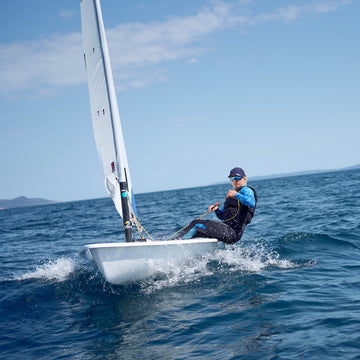
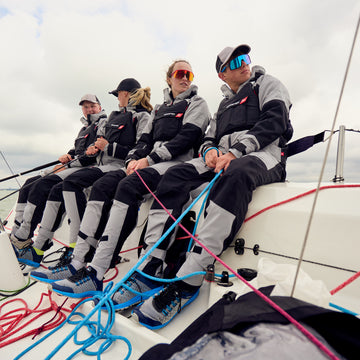
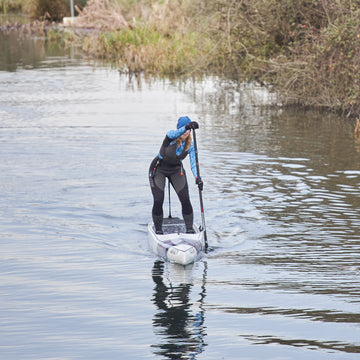
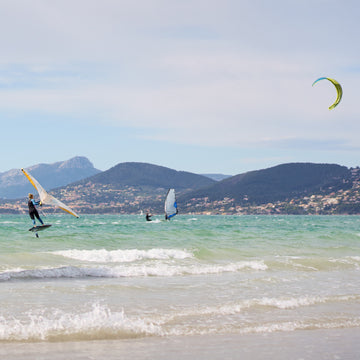
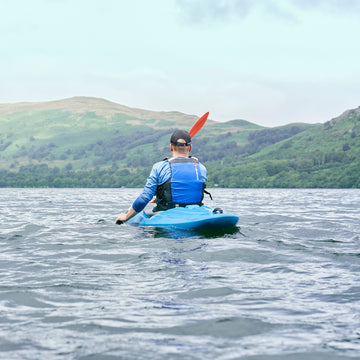
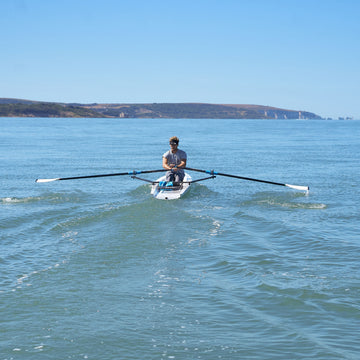
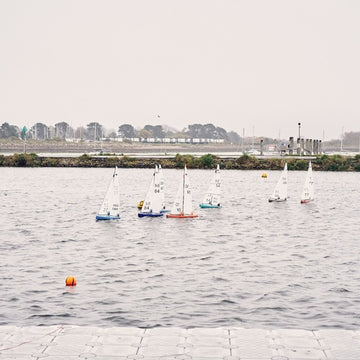
 Select Store
Select Store
 EU
EU
 US
US
